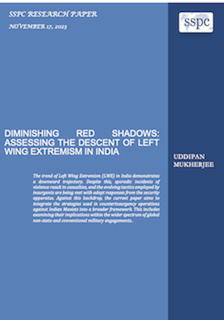Diminishing Red Shadows: Assessing the Descent of Left Wing Extremism in India

The trend of Left Wing Extremism (LWE) in India demonstrates a downward trajectory. Despite this, sporadic incidents of violence result in casualties, and the evolving tactics employed by insurgents are being met with adept responses from the security apparatus. Against this backdrop, the current paper aims to integrate the strategies used in counterinsurgency operations against Indian Maoists into a broader framework. This includes examining their implications within the wider spectrum of global non-state and conventional military engagements.




